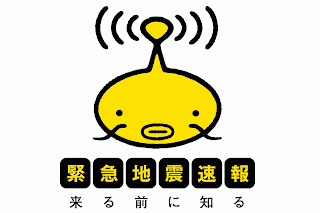 |
| Namazu: Japan's Symbol For EEW |
Earthquake early warning involves a network of seismometers that detect the fast moving p-wave of an earthquake, that has a small amplitude, which makes it less damaging than other waves. A computer program then estimates the location and magnitude of the earthquake, before sending out warnings to the public. The warnings reach the public (usually) before the slower and more damaging s-waves and surface waves, that have larger amplitudes, arrive. This is similar to the way we see lightning before we hear thunder.
The light from the lightning travels at the speed of light, while the sound of the thunder travels at the speed of sound. The closer you are to the lightning strike the more quickly you hear the thunder. This is similar to earthquake early warning. Warnings are sent at nearly the speed of light, while earthquake waves travel at about the speed of sound. The closer one is to the epicenter of the earthquake, the shorter the amount of warning time that person will receive.
For more information view my other posts regarding earthquake early warning.
It was a very good post indeed. I thoroughly enjoyed reading it in my lunch time. Will surely come and visit this blog more often. Thanks for sharing. Four earthquakes hit southwest Alaska this weekend
ReplyDelete